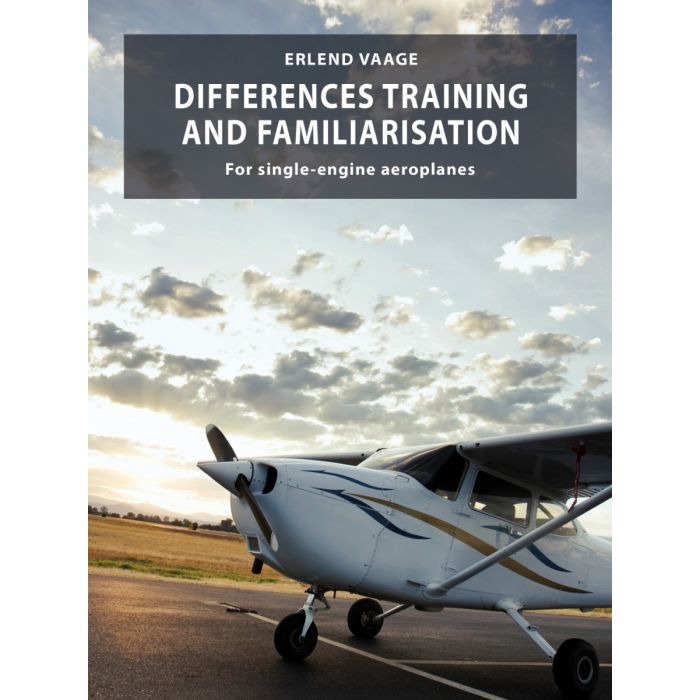Differences Training and Familarisation
This book is for those with a pilot's license who wish to expand their competence and skills to fly an aeroplane with different equipment and systems than they may have used during their basic training. The content of this book will provide you with the necessary theoretical foundation for this. It is also suitable for those who wish to refresh their knowledge.
This book will also be valuable for instructors providing differences training to prepare their briefings and lessons.
Part-FCL defines that you must have differential training to fly land and sea aeroplanes with the following features:
- Variable pitch propeller.
- Retractable undercarriage.
- Turbo or supercharged engine.
- Cabin pressurisation.
- Tail wheels (not included in this book, separate book by Erlend Vaage).
- EFIS (Electronic Flight Instrument System)
- SLPC (Single Lever Power Control).
Since aeroplanes with turbo systems and pressurised cabins enable flying at altitudes where additional oxygen may be required, a chapter on this topic has been included in this book. While knowledge of oxygen systems is not a requirement for differential training, it is still important to be aware of it.
When an aeroplane is equipped with glass cockpit instrumentation (EFIS), this generally means that an advanced autopilot is onboard. Knowing how to use this can be valuable, so there is also a chapter on this topic.
For those who have exclusively flown with SLPC («single lever power control»), there is a chapter on flying more «manual» aeroplanes.
We have observed that individuals who have learned to fly with glass cockpit instrumentation can face challenges when learning to fly with analogue instruments. Therefore, towards the end of the book, you will also find some information on this. 206 pages.
This book is for those with a pilot's license who wish to expand their competence and skills to fly an aeroplane with different equipment and systems than they may have used during their basic training. The content of this book will provide you with the necessary theoretical foundation for this. It is also suitable for those who wish to refresh their knowledge.
This book will also be valuable for instructors providing differences training to prepare their briefings and lessons.
Part-FCL defines that you must have differential training to fly land and sea aeroplanes with the following features:
- Variable pitch propeller.
- Retractable undercarriage.
- Turbo or supercharged engine.
- Cabin pressurisation.
- Tail wheels (not included in this book, separate book by Erlend Vaage).
- EFIS (Electronic Flight Instrument System)
- SLPC (Single Lever Power Control).
Since aeroplanes with turbo systems and pressurised cabins enable flying at altitudes where additional oxygen may be required, a chapter on this topic has been included in this book. While knowledge of oxygen systems is not a requirement for differential training, it is still important to be aware of it.
When an aeroplane is equipped with glass cockpit instrumentation (EFIS), this generally means that an advanced autopilot is onboard. Knowing how to use this can be valuable, so there is also a chapter on this topic.
For those who have exclusively flown with SLPC («single lever power control»), there is a chapter on flying more «manual» aeroplanes.
We have observed that individuals who have learned to fly with glass cockpit instrumentation can face challenges when learning to fly with analogue instruments. Therefore, towards the end of the book, you will also find some information on this. 206 pages.
| Størrelse | XL |
|---|

